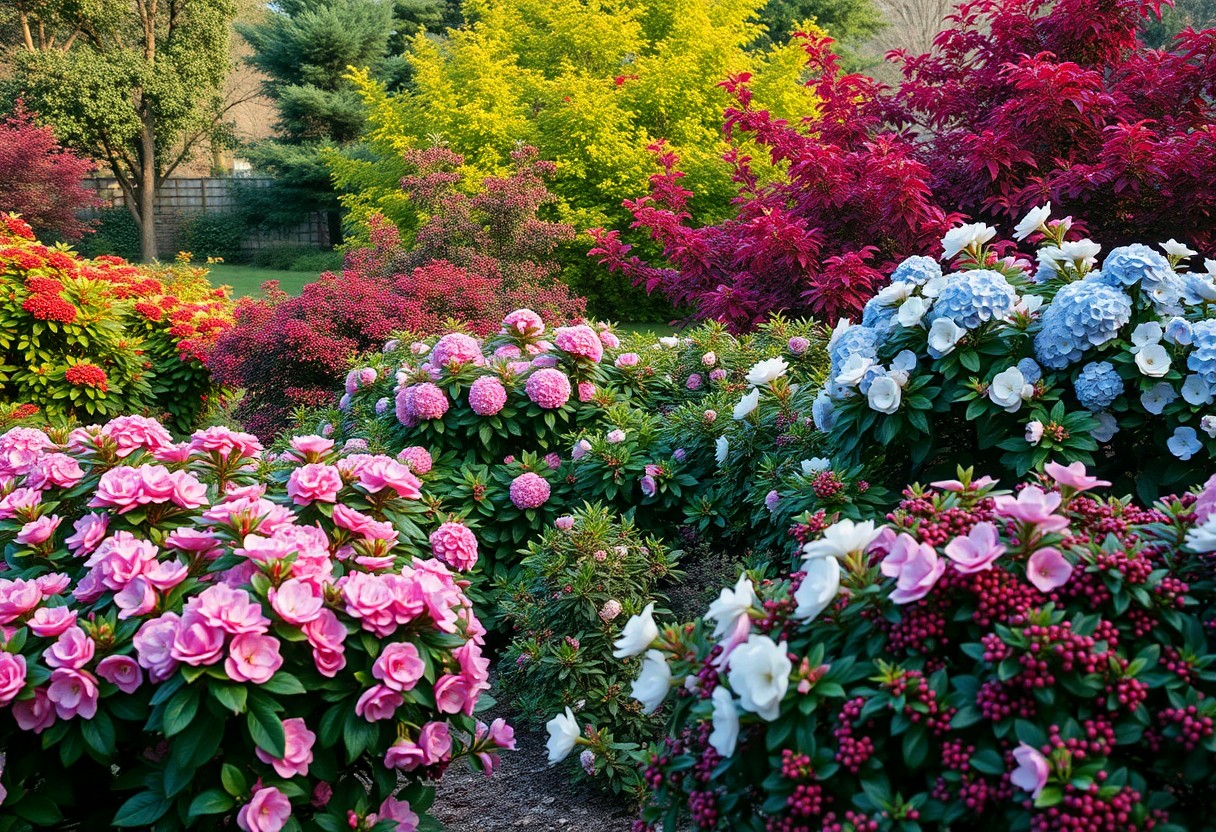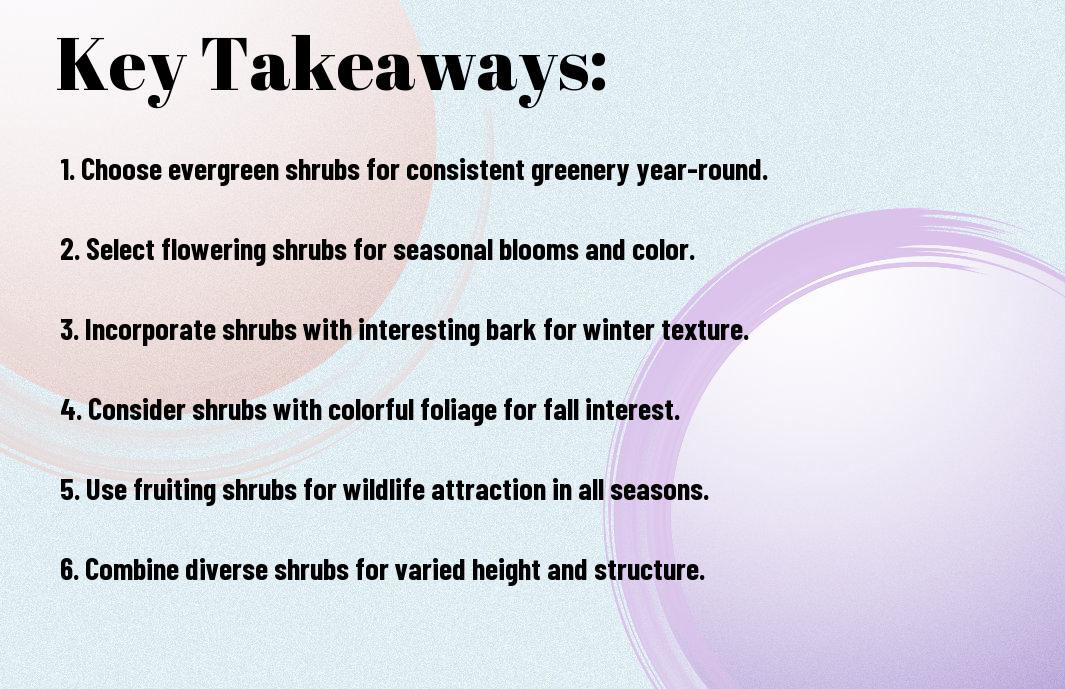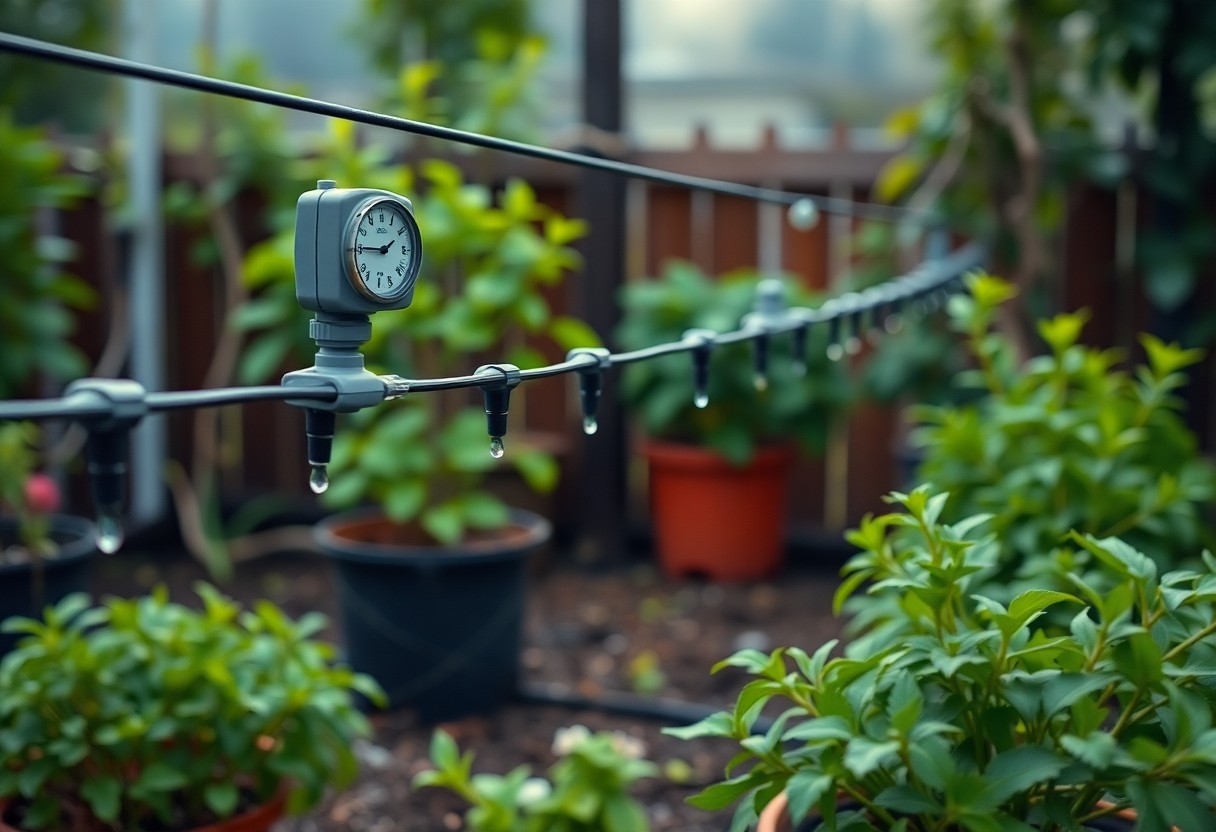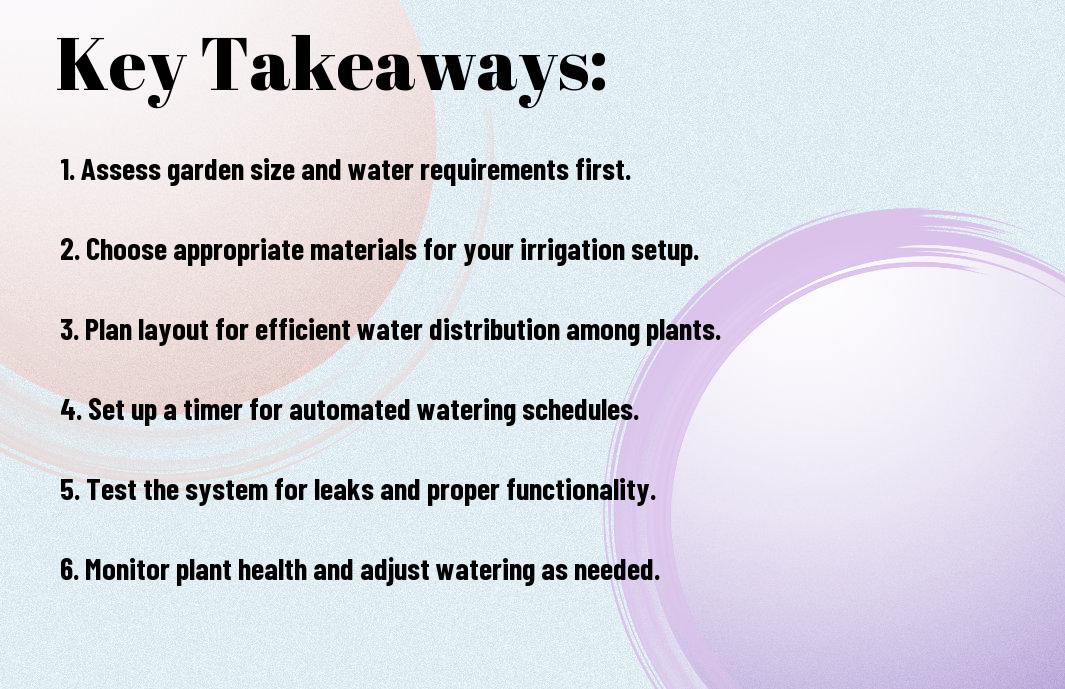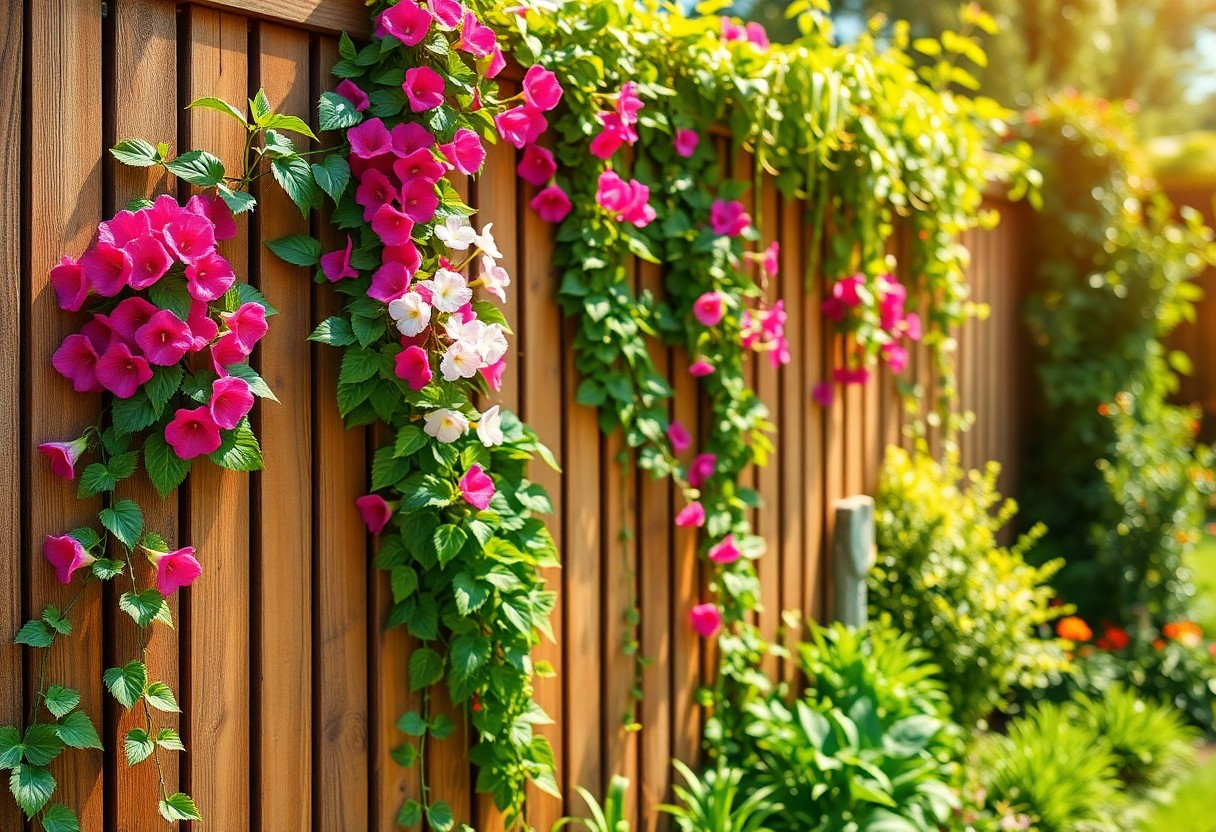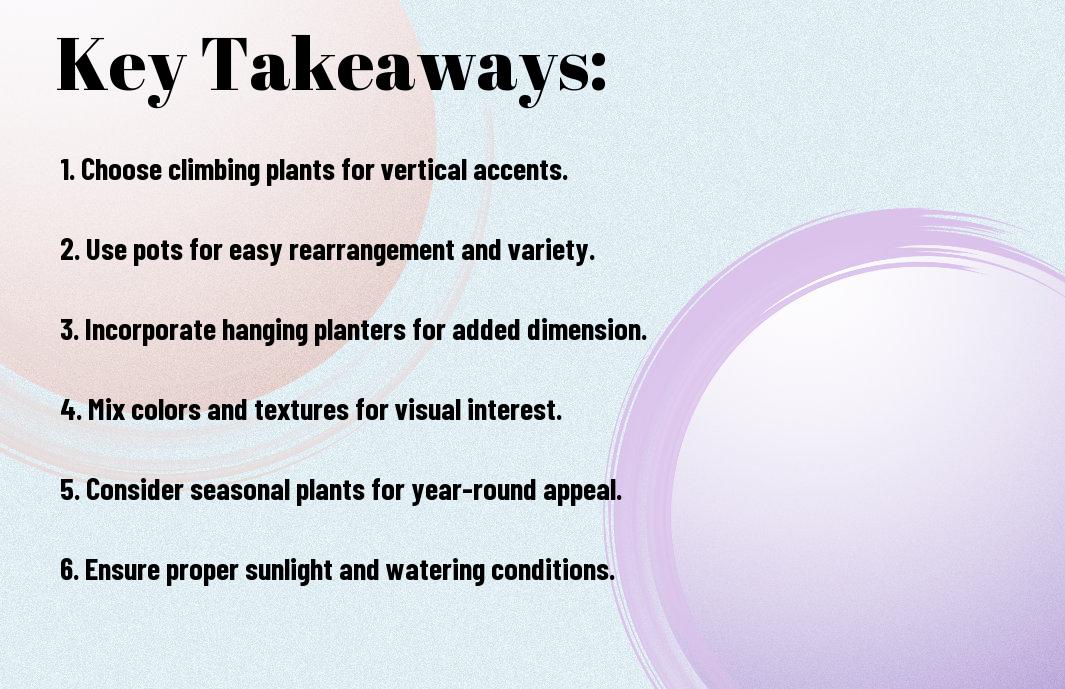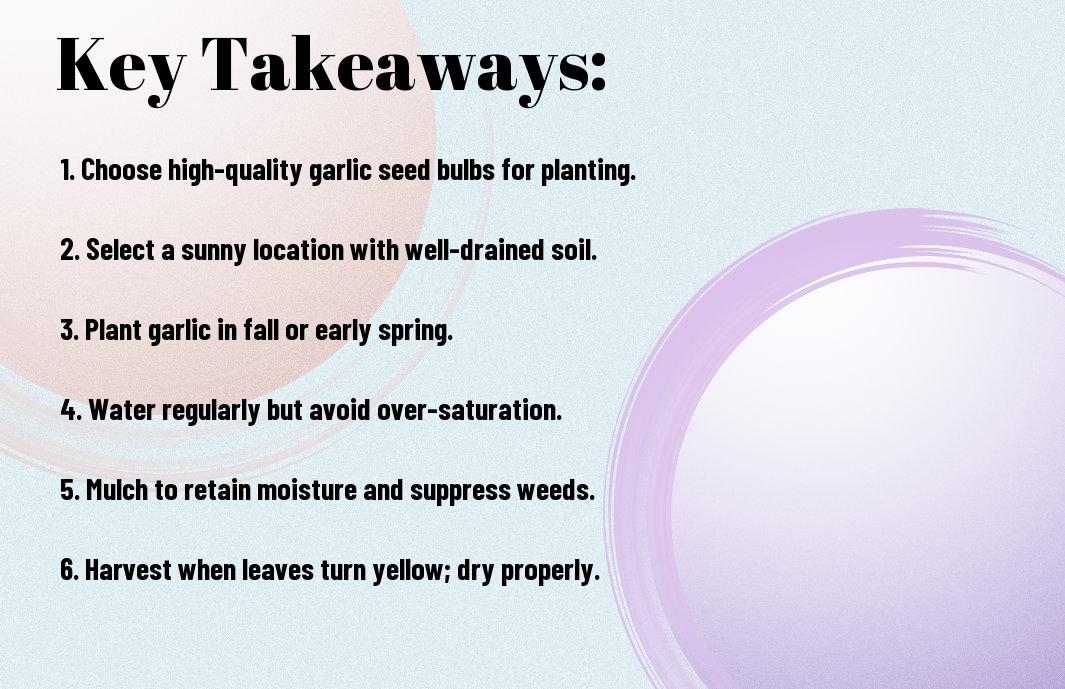You’re looking to transform your home into a peaceful oasis, and a Zen-inspired living space is your goal. You want to create an atmosphere that promotes relaxation and calmness. Your journey begins with simplicity and clarity. You will learn how to declutter, select minimal decor, and incorporate natural elements to bring serenity into your life. By following these steps, you will be able to design a space that reflects your inner peace and tranquility.
Key Takeaways:
To create a serene and peaceful living space, consider the following points:
- Emphasize Natural Light and Minimalism by using sheer curtains, decluttering, and opting for a limited color palette to create a sense of calmness and clarity.
- Incorporate Nature into your space by adding plants, a water feature, or a Zen garden to bring in a sense of balance and harmony.
- Focus on Textiles and Colors that promote relaxation, such as soft fabrics, neutral tones, and Earth Tones, to create a cozy and inviting atmosphere.
Defining Zen Style
A well-designed Zen-inspired living space can bring a sense of calm and tranquility to your home. You can achieve this by incorporating simple and natural elements into your decor.
Origins and Principles
Any introduction to Zen style must consider its origins in Japanese culture, where it emphasizes simplicity and mindfulness. You will find that Zen principles focus on creating a sense of balance and harmony in your living space.
Key Elements
For a Zen-inspired living space, you will want to focus on natural materials, such as wood and stone, and minimal decor. You can use these elements to create a sense of calm and simplicity in your home.
Principles of Zen style guide your selection of key elements, helping you choose items that promote a sense of serenity and peace. You will find that applying these principles helps you create a living space that is both beautiful and functional, allowing you to relax and unwind in your home.
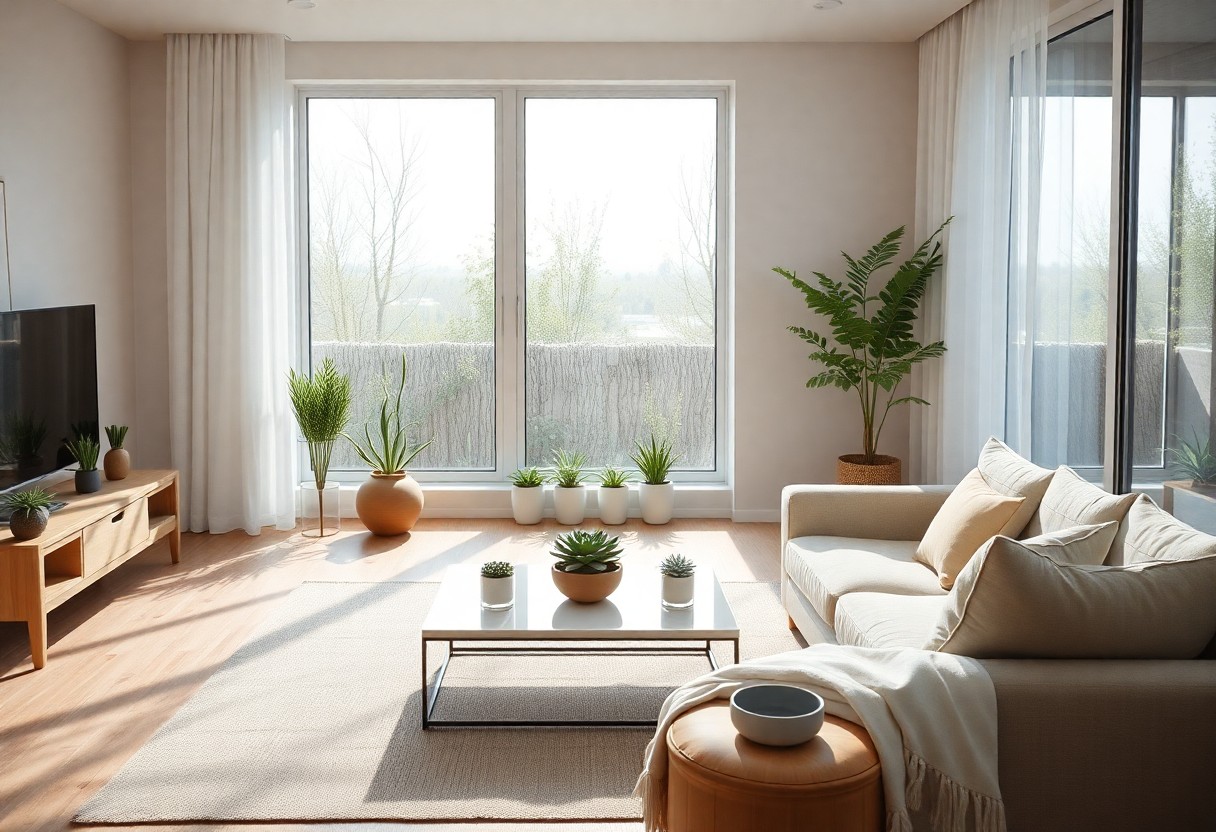
Color Schemes and Lighting
Even the most minimalistic spaces can benefit from thoughtful color schemes and lighting. You can create a calming atmosphere by choosing soothing colors and optimizing natural light. Your goal is to design a space that promotes relaxation and serenity.
Calming Colors
Color selection is key to creating a zen-inspired living space. You will want to focus on muted, natural hues such as beige, gray, and blue, which can help you unwind and feel more at ease in your environment.
Natural Light
One of the most effective ways to enhance your space is by utilizing natural light. You can achieve this by keeping windows unobstructed and using sheer curtains to filter the light, creating a sense of calm and tranquility.
In fact, natural light can have a profound impact on your mood and overall well-being. You can amplify its effects by positioning mirrors strategically to reflect the light, making your space feel brighter and more expansive, and helping you connect with the outdoors from the comfort of your own home.
Furniture and Decor
Not everything needs to be brand new when creating a zen-inspired living space. You can repurpose or upcycle existing items to add character to your space.
Minimalism
Around your living space, adopt a mindset that values simplicity and clarity, allowing you to focus on what’s truly important. You’ll find that your space feels more serene and peaceful.
Natural Materials
Beside the benefits of sustainability, natural materials like wood and bamboo bring warmth and texture to your space, creating a cozy and inviting atmosphere. You can incorporate these elements through furniture, flooring, or decorative accents.
Another way to emphasize natural materials is by bringing the outdoors in, using elements like plants, stones, or water features to create a sense of balance and harmony in your space. You can place a small herb garden on your windowsill or a vase with branches on your coffee table to add a touch of nature to your decor.
Textures and Patterns
Unlike other design elements, textures and patterns in a Zen-inspired space should be simple and understated. You can find inspiration for creating a peaceful atmosphere in your home by visiting 1 To Zen – 10 Easy Steps To Creating A Zen Home Interior guide.
Incorporating Nature
About bringing the outdoors in, you can add plants, natural fibers, and elements like wood or stone to create a sense of calm in your space.
Balance and Harmony
After selecting your textures and patterns, you will need to balance them to achieve harmony in your Zen-inspired space, which you can do by limiting your choices and using them thoughtfully.
Achieving balance and harmony is key to creating a Zen-inspired living space. You can do this by considering the visual weight of each element and arranging them in a way that feels peaceful and calming to you. By doing so, you will create a space that promotes relaxation and serenity.
Organizing Your Space
To create a zen-inspired living space, you need to start by organizing your belongings and surroundings. This involves decluttering and rearranging your space to promote a sense of calm and serenity.
Decluttering
Along with simplifying your life, getting rid of unnecessary items will help you focus on what’s truly important. You’ll be able to see what you have and make the most of your space.
Functional Layout
Above all, your space should be easy to navigate and functional. You want to be able to move effortlessly from one area to another without feeling overwhelmed or distracted.
Your functional layout should also take into account your daily routines and habits. Consider the path you take through your home and how you can arrange your furniture to make it more efficient. By doing so, you’ll be able to create a sense of flow and harmony in your living space, making it feel more peaceful and zen-inspired.
Bringing in Nature
Many ways to create a zen-inspired living space involve connecting with nature. You can find inspiration for your design by visiting Zen Decorating Ideas to get started.
Plants and Greenery
Around this time, you’ll want to consider adding plants to your space, as they help purify the air and create a calming atmosphere, making your living space feel more serene.
Outdoor Elements
Any outdoor elements you bring into your home, such as a water feature or natural textures, can enhance the zen ambiance and make your space feel more connected to nature.
Hence, you can incorporate outdoor elements, like stones or reclaimed wood, into your design to add warmth and coziness to your space, making it feel more inviting and peaceful, allowing you to unwind and relax in your zen-inspired living space.
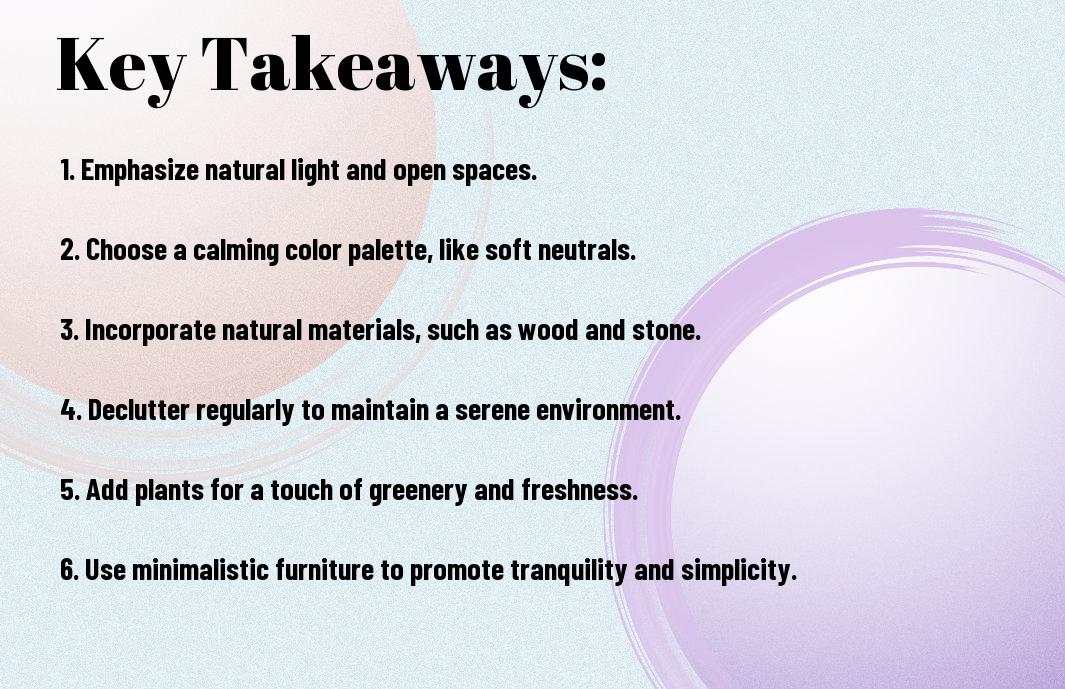
Summing up
To wrap up, you have now learned the necessarys of creating a Zen-inspired living space. You can simplify your life by applying these principles to your home, making it a calm and serene oasis. Your newfound knowledge will help you design a space that promotes relaxation and clarity, allowing you to unwind and reconnect with your inner self in your own tranquil atmosphere.
FAQ
Q: What is the first step in creating a Zen-inspired living space?
A: To create a Zen-inspired living space, the first step is to declutter and minimalize your surroundings. This involves getting rid of any unnecessary items, reducing clutter, and organizing your belongings in a way that promotes a sense of calm and serenity. By doing so, you will be able to create a blank canvas that allows you to design a space that is truly reflective of the Zen philosophy, which emphasizes the importance of simplicity and clarity.
Q: How can I incorporate natural elements into my Zen-inspired living space?
A: Incorporating natural elements is an vital part of creating a Zen-inspired living space. You can do this by adding plants, using natural materials such as wood and stone, and bringing in elements of nature like water features or a bowl of river rocks. Additionally, consider using natural textiles like bamboo, hemp, or cotton to add warmth and texture to your space. By bringing the outdoors in, you can create a sense of harmony and balance that is characteristic of Zen design.
Q: What colors are typically used in a Zen-inspired living space?
A: The color palette used in a Zen-inspired living space is typically muted and calming, with a focus on neutral tones such as beige, gray, and white. These colors help to create a sense of calmness and serenity, and can be used on walls, furniture, and accessories. You can also incorporate earthy tones like brown and green to add depth and warmth to your space. Avoid using bold or bright colors, as they can disrupt the peaceful atmosphere that is characteristic of a Zen-inspired living space.
Q: How can I use lighting to create a Zen-inspired atmosphere in my living space?
A: Lighting can play a significant role in creating a Zen-inspired atmosphere in your living space. Consider using soft, warm lighting like candles, lanterns, or floor lamps to create a sense of warmth and coziness. Avoid using harsh overhead lighting, as it can create a sense of tension and stress. Instead, use table lamps or floor lamps to create pools of light that can help to define different areas of your space and create a sense of intimacy. You can also use natural light to your advantage by placing furniture and decor near windows to maximize the amount of natural light in your space.
Q: What types of furniture and decor are typically used in a Zen-inspired living space?
A: The furniture and decor used in a Zen-inspired living space are typically simple, clean-lined, and functional. Consider using low-profile furniture with straight lines and minimal ornamentation, such as a low-slung sofa or a simple wooden coffee table. You can also incorporate decorative elements like woven baskets, natural fiber rugs, and simple artwork to add texture and visual interest to your space. Avoid using cluttered or overly ornate decorations, as they can disrupt the sense of calmness and serenity that is characteristic of a Zen-inspired living space. Instead, opt for simple, understated pieces that promote a sense of peace and tranquility.
